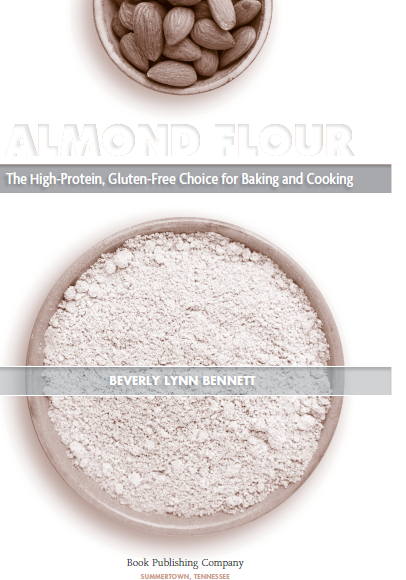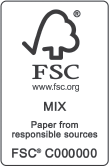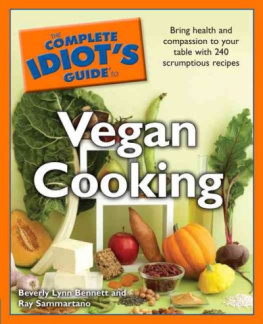
Library of Congress Cataloging-in-Publication Data
Names: Bennett, Beverly Lynn, author.
Title: Almond flour : the high-protein, gluten-free choice for baking and
cooking / Beverly Lynn Bennett.
Description: Summertown, Tennessee : Book Publishing Company, 2016. |
Includes index.
Identifiers: LCCN 2015044191 (print) | LCCN 2015045626 (ebook) | ISBN
9781570673382 (pbk.) | ISBN 9781570678608 (E-book)
Subjects: LCSH: Cooking (Almond flour) | Baking. | Gluten-free dietRecipes.
| LCGFT: Cookbooks.
Classification: LCC TX814.2.A44 B46 2016 (print) | LCC TX814.2.A44 (ebook) |
DDC 614.81/5dc23
LC record available at http://lccn.loc.gov/2015044191

We chose to print this title on sustainably harvested paper stock certified by The Forest Stewardship Council, an independent auditor of responsible forestry practices. For more information, visit https://us.fsc.org. 2016 Beverly Lynn Bennett | 
|
All rights reserved. No portion of this book may be reproduced by any means whatsoever, except for brief quotations in reviews, without written permission from the publisher.
Cover Photos: Alan Roettinger
Cover and interior design: John Wincek
Stock photography: 123 RF
Printed in the United States of America
Book Publishing Company
PO Box 99
Summertown, TN 38483
888-260-8458
bookpubco.com
ISBN: 978-1-57067-338-2
21 20 19 18 17 16 1 2 3 4 5 6 7 8 9

CONTENTS

ACKNOWLEDGMENTS
Id like to express my heartfelt appreciation to several people who helped to make this book possible: Cynthia and Bob Holzapfel, my talented editor Jo Stepaniak, and the rest of the Book Publishing Company staff, who publish and produce so many fantastic vegan and vegetarian lifestyle books and cookbooks. I would also like to thank my family and friends for their love and support, especially my husband, Ray Sammartano, and feline companion, Luna, for all their help during the recipe testing and writing of this book. And last but not least, to all my fellow vegans, I thank you for doing all that you can to spread the vegan message and for choosing to improve your lives and the lives of our fellow creatures who share this planet with us.

INTRODUCTION
Almonds are one of the worlds top-selling and most beloved nuts. This ancient food is believed to have originated in the regions that border the Mediterranean Sea. However, the cultivation and consumption of almonds quickly spread throughout western Asia, northern Africa, southern Europe, and eventually throughout the world, as explorers and traders brought almonds along on their travels. Many horticultural experts believe that the almond was one of the earliest domesticated fruit trees, and historically almonds were featured prominently in the cuisines of the area now known as the Fertile Crescent, as well as Greece, Italy, and Spain.
We have the Spaniards to thank for introducing almonds to North America, because early Spanish explorers brought their highly prized almond trees with them and planted them outside their missions in California. It took a few centuries for almond orchards to thrive in California, but the state now provides nearly all the almonds consumed in the United States. In fact, almonds are cultivated on more than a half million acres in the fertile Sacramento and San Joaquin Valleys, although the vast majority of California almond farms are family owned and smaller than one hundred acres. Through the efforts of these dedicated farmers, almonds have become Californias top agricultural export in addition to being the largest exported crop in the United States; California supplies over 80 percent of the worlds almonds. The other top ten almond cultivators include Afghanistan, Algeria, Iran, Italy, Morocco, Spain, Syria, Tunisia, and Turkey.
Today virtually all grocery stores, natural food stores, specialty markets, and online food purveyors sell almonds in packages and in bulk. Youll find almonds that are raw, blanched, roasted, smoked, salted, unsalted, seasoned, sprouted, whole, sliced, slivered, and chopped. In turn, these forms of almonds are also used to make many almond-based food products, such as almond butter, almond paste, almond cheese, almond milk, almond yogurt, almond extract, almond liqueur, almond meal, and natural and blanched almond flour, just to name a few. With all these choices, youre bound to find a variety of appealing almond-based products that you can easily incorporate into your daily diet.

Of all the almond-based products on the market, almond flour may be the least familiar, as its a relative newcomer to the shelves. But because of its impressive versatility, thats rapidly changing.
Almond flour tastes nutty, of course, but its also sweet, rich, and buttery. Because its made from a nut, not a grain, almond flour is gluten-free and has become a popular alternative to wheat flour and other grain-based flours, particularly among followers of specialty eating plans, including paleo, gluten-free, grain-free, specific-carbohydrate, low-carbohydrate, and high-protein diets. As a bonus, using almond flour rather than wheat flour or other gluten-free flours increases the protein content of recipes while simultaneously decreasing their carbohydrate content.
You can obtain all the health benefits of almonds simply by using more almond flour in baking and cooking. One-quarter cup of almond flour is the equivalent of twenty-three whole almonds (about one ounce). According to data from the US Department of Agriculture, one ounce of whole almonds or cup of almond flour contains 161 calories, 14 grams of fat (and only 1 gram of saturated fat), 6 grams of carbohydrates, 3 grams of fiber, 1 gram of sugar, 6 grams of protein, 1.7 grams of omega-3 fatty acids, and 3.3 grams of omega-6 fatty acids. Additionally, this amount of almond flour provides 37 percent of the daily value (DV) of vitamin E, 32 percent of manganese, 19 percent of magnesium, 17 percent of riboflavin, 14 percent of copper, 14 percent of phosphorus, 7 percent of calcium, 6 percent of iron, 6 percent of zinc, 5 percent of niacin, 4 percent of thiamin, and 3 percent of folate.
Almond Flour versus Almond Meal
Many recipes that call for almond flour state almond flour/almond meal in the ingredient list, but that is misleading. These two products arent the same, and using one instead of the other can make or break a recipe.
Both almond flour and almond meal start with freshly picked raw almonds that are steam pasteurized, a process required by law in the United States, Canada, and Mexico. The almonds then pass through a series of dryers to cool them and reduce their moisture content. Finally, the almonds are thoroughly dried and ground into either a flour or coarse meal.
Next page













